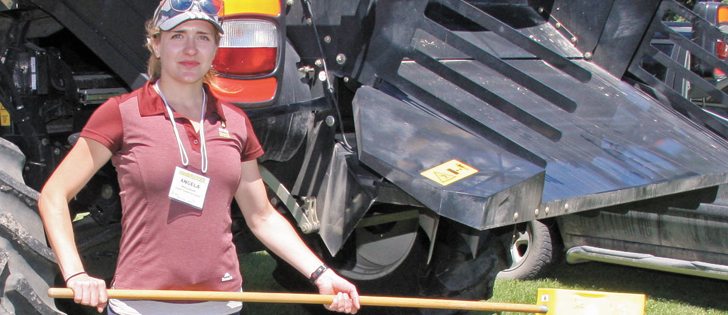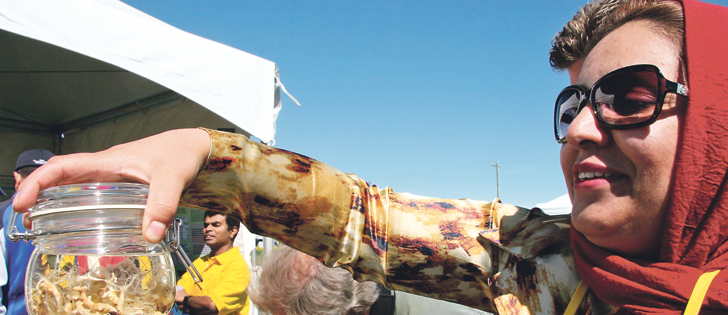LACOMBE, Alta. — A made-in- Alberta invention is researching hail damage and recovery in wheat, canola and pulses.
Invented by Ken Cole of Farming Smarter in Lethbridge in 2015, the concept is simple. Chains with golf balls on the ends are attached to a rotating drum. The drum can be mounted on a small tractor or a unit used for working on small research plots.
The speed and rotation of the drum can be controlled to simulate hail damage from zero to 100 percent.
“There was a research need to simulate hail to answer those questions like yield, recovery attempts and now, people are interested in it when it comes to breeding,” said Rodney Werezuk of Alberta Innovates Technology Futures at Vegreville.
Read Also

Growing garlic by the thousands in Manitoba
Grower holds a planting party day every fall as a crowd gathers to help put 28,000 plants, and sometimes more, into theground
Plant breeders are developing shatter resistant varieties to prevent hail from smashing canola pods, and this machine can test mature crops to assess pod damage.
Werezuk had previously simulated hail damage by manually beating the crop with chains or throwing rocks, but that was not practical. With this machine, more golf balls can be added or the crop can be hammered with heavy chains.
Alberta Innovates, Alberta Pulse Growers and Agriculture Financial Services Corp., which provides hail insurance, are working to together with units at Fahler, Vegreville and Lethbridge.
The unit was demonstrated on canola plots during CanolaPalooza at Lacombe June 28.
The units can move through the crops and beat them down, and researchers will then assess damage and watch to see if later applications of fungicide or micronutrients make a difference in plant recovery.
“The point is to assess hail damage and the yield loss attributed to the amount of hail damage at different stages of the crop,” said Tom Penner of AFSC.
“We can never determine the damage of these plants when we are in the field because they recover so well,” he said.
The corporation hopes to create a chart that shows expected plant recovery at different levels of loss about 10 days after the event. It may also be used to train hail adjusters.
Data should be analyzed by the end of the year followed with practical information to help farmers make better decisions about crop recovery. Geography will also be considered.
“Part of the way the crop responds to hail is due to the environment,” Werezuk said.
“The weather in Fahler is different from Lethbridge, so you might find a difference between the sites.”
Insurance companies consider Alberta to be the most hail prone in Canada.


















